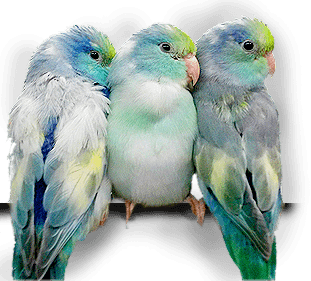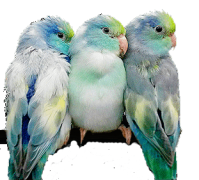Bumblefoot Disease
Bumblefoot occurs in all species of birds but most often affects birds in captivity or aviaries. Bumblefoot can be the result of poor nutrition, poor housing conditions, inactive birds, and obese birds.
The symptoms noticed by the owner or caregiver is sores or lesions on the feet, swollen joints in the feet and toes. Birds with this condition will be unwilling to stand or land and grasp onto perches with one or both feet.
First symptom to be observed by the owner or caregiver will be abrasions on the lower surface of the foot, small pinkish areas on the foot or shiny patches of skin that appears on the top or bottom of the foot or feet. If left unnoticed the abrasions, calluses may develop into sores or lesions. As the affected areas have lost their protective scales this will allow bacteria usually the (Staphylococcus bacteria) to come into contact and may result in an infection. The lesions will become redder and more inflamed. This will require an antibiotic therapy. Then you must identify the causative action which may include plastic perches, rough or sandpaper perches, unclean perches. If left untreated the lesions will become blue or black and severe distortion of the foot and toes may result in permanent damage.
The infection will eventually eat into the bone of the foot, travel throughout the body causing systemic failure or even death. This is a painful condition to birds and you should contact your veterinarian immediately. Your veterinarian may recommend dietary changes, prescribe antibiotics and soaking of the feet with warm water and Epsom salt. Surgery may be required in serious instances where sever distortion of the contours of the foot are present.
The best prevention is to have natural wood branches appropriately sized, pesticide-free and non-toxic trees (ex. Northern Hardwoods, Citrus, Eucalyptus, Australian Pine) with varying diameters appropriate for the size bird and positioned in different places.
Vitamin A Deficiency
Some cases of Bumblefoot are caused by a Vitamin A deficiency. Vitamin A is the nutrient which is responsible for keeping the epithelial cells healthy. Vitamin A deficiency occurs when birds are mostly feeding on seed only diets. Seeds are typically low in vitamin A. This nutrient is responsible for maintaining healthy cells which line the gastrointestinal tract, the respiratory tract, the urogenital tract, and the skin. If these cells do not remain intact and healthy, infections can then be introduced into many areas of the body and result in severe illness or even death.
Importance of Proper Diet
Diet is extremely important in birds and is the best prevention of illness and disease.
Excess Protein
Excess protein stored promotes the growth of bacteria which are excreted through the epithelial (skin cells) and areas where there are feathers, feathers will absorb the protein, however, in bare areas such as the feet these bacteria will present themselves as pinkish, red calluses which will eventually turn blue or black. They appear most often on the bottom of the feet, however they may also appear on the top or the tips of the toes.
Other Causes
There can be other causes such as metabolic disorder, compromised immune system or excessive levels of uric acid. Always remember that a proper diet is extremely important in maintaining a healthy happy bird!


